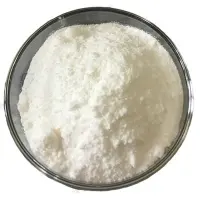Nature Sub-Journal: The new team of YuYu Yu of Peking University has revealed a new mechanism for cancer immunity.
-
Last Update: 2020-07-22
-
Source: Internet
-
Author: User
Search more information of high quality chemicals, good prices and reliable suppliers, visit
www.echemi.com
The development and metastasis of malignant tumor is the result of game with immune system.tumor cells can escape the attack of immune cells by inducing T lymphocyte depletion.in recent years, PD-1 antibody therapy has been widely used in tumor immunotherapy by blocking the depletion of T lymphocyte function and restoring the activity of T cells.however, only 20% of patients respond to PD-1 antibody therapy.therefore, it is of great significance to explore the mechanism of tumor affecting the function of T lymphocytes, and to clarify the reason why T lymphocytes function exhaustion in tumor microenvironment, which is of great significance to identify new tumor immune targets and develop new effective tumor treatment strategies.on January 13, 2020, Professor Yin Yuxin from the Institute of Systems Biomedicine of Peking University published a research paper entitled "the phosphotase PAC1 acts as a T cell suppressor and attenuates host antagonist immunity" online in Nature Immunology (if = 23.53).this study reported for the first time that PAC1, as a negative regulator of the immune system, specifically inhibits T lymphocyte defense function and promotes tumor immune escape.through systematic analysis of inflammatory factors and metabolites in tumor microenvironment, Yin Yuxin's team found that superoxide ROS produced by tumor can maintain high expression of PAC1 gene in peripheral infiltrating T lymphocytes.further studies have shown that ROS promotes the transcription and expression of PAC1 by activating transcription factor EGR1.in 2003, Professor Yin Yuxin's research group reported for the first time that PAC1 was involved in the occurrence and development of tumors in nature, and proposed that PAC1, as a phosphatase specifically expressed in the immune system, may participate in the formation and remodeling of tumor microenvironment.in 2015, Professor Yin Yuxin's research team published a research paper in Nature Immunology, revealing that PAC1 inhibits Th17 cell differentiation by regulating the activity of transcription factor STAT3, thus inhibiting the occurrence and development of autoimmune diseases.in view of PAC1's strong immunomodulatory ability, the research group then explored whether PAC1 could become a new tumor immunotherapy target.this study found that PAC1 was highly expressed in depleted T lymphocytes, and the prognosis of tumor patients with high expression of PAC1 was poor.further studies showed that PAC1 inhibited the expansion and secretion of cytokines of CD8 + T cells.using PAC1 gene knockout mice and tumor bearing mice models, researchers found that PAC1 deletion enhanced the effector function of CD8 + T cells, reduced the expression of PD-1 on the surface of T cells, and promoted host anti-tumor immune response, thus inhibiting tumor progression and metastasis.in terms of mechanism, PAC1 through recruitment of nucleosome remodeling and deacetylation (NuRD) complex, reshapes the chromatin openness of T cells, specifically inhibits the expression of downstream effector genes, and finally promotes the formation of depleted T lymphocytes.in conclusion, PAC1, as an important suppressor of T lymphocyte function, can weaken the host immune surveillance function and promote tumor immune escape. inhibition of PAC1 pathway can activate the defense function of T lymphocytes. This study provides a potential new drug target for tumor immunotherapy. it is reported that associate researcher Lu Dan and postdoctoral Liu Liang of School of basic medicine of Peking University are the co first authors of the paper, and Professor Yin Yuxin of the Institute of Systems Biomedicine of Peking University is the corresponding author. the research was supported by national key R & D program, National Natural Science Foundation of China, Beijing Natural Science Foundation, Peking University Tsinghua Life Science Joint Center (CLS) and young scholars training fund of Peking University Medical Department. paper links:
This article is an English version of an article which is originally in the Chinese language on echemi.com and is provided for information purposes only.
This website makes no representation or warranty of any kind, either expressed or implied, as to the accuracy, completeness ownership or reliability of
the article or any translations thereof. If you have any concerns or complaints relating to the article, please send an email, providing a detailed
description of the concern or complaint, to
service@echemi.com. A staff member will contact you within 5 working days. Once verified, infringing content
will be removed immediately.







